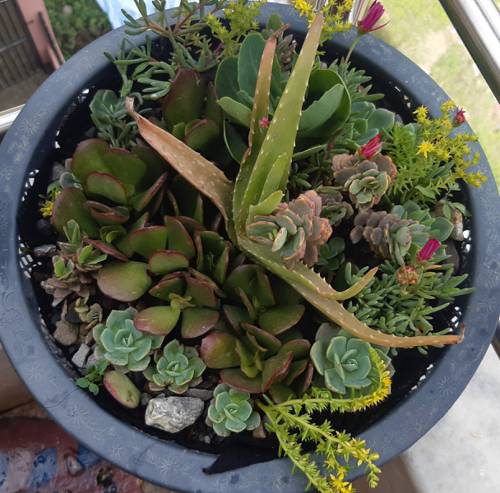
FAQ About Indoor Plant Safety for Children

Why is it important to consider indoor plant safety for children?
Indoor plant safety is crucial because some plants can be toxic if ingested, causing adverse health effects in children who are naturally curious and might taste them. Also, parts of plants can pose choking hazards or cause allergic reactions. Ensuring safety allows children to interact with plants positively, promoting learning and appreciation for nature.

Which indoor plants are considered safe for children?
Plants such as spider plants (Chlorophytum comosum), Boston ferns (Nephrolepis exaltata), and African violets (Saintpaulia) are generally non-toxic and safe for homes with children. They are known for being child-friendly, as they do not have toxic properties that could harm children if touched or ingested.

Are there common houseplants that should be avoided in homes with children?
Yes, some commonly found houseplants are toxic and should be avoided in homes with children. These include dieffenbachia, philodendron, pothos, and oleander. These plants contain substances that can cause irritation or more severe health issues if ingested, so it's best to avoid them or keep them out of children's reach.

How can I prevent my child from accessing dangerous plants?
To prevent children from accessing dangerous plants, place these plants in areas that are difficult for children to reach, such as on high shelves or hanging baskets. Alternatively, you could use safety gates or childproof locks to restrict access to certain rooms or areas that contain these plants. Always supervise young children when they are in areas with plants.

What should I do if my child ingests part of a plant?
If your child ingests part of a plant, immediately remove any remaining plant pieces from their mouth and rinse their mouth with water. Contact a healthcare professional or the Poison Control Center for guidance, providing the plant's name if possible. Monitoring for symptoms like nausea, vomiting, or rash is important while seeking professional assistance.

Can children develop allergies to indoor plants?
Yes, children can develop allergies to indoor plants. Some plants can produce allergens, such as pollen or mold, which could lead to allergic reactions. Symptoms may include sneezing, a runny nose, or skin irritation. If you suspect an allergy, consult a healthcare provider to determine a suitable course of action.

What are some child-friendly ways to engage children with indoor plants?
Engage children with indoor plants by involving them in simple gardening tasks like watering, dusting leaves, or even planting seeds. Use this activity to teach them about plant growth stages and care. Consider setting up a small garden area where they can observe and interact with the plants safely and learn responsibility as they care for them.

How can I teach my child about plant safety?
Teach children about plant safety by explaining which plants are off-limits and why. Use educational resources like books or videos to reinforce lessons about the types of plants that should be avoided. Role-playing scenarios where they pretend to care for plants can also help instill safe habits. Always supervise young children around plants and remind them regularly about safety.

Are there any benefits to having indoor plants for children?
Yes, indoor plants can offer several benefits for children. They can help improve air quality, which is beneficial for health. Additionally, plants can have a calming effect, create a soothing environment, and provide educational opportunities to learn about biology and nature. Helping care for plants can also teach children responsibility and patience.

What are some suitable indoor plants for interactive play with children?
Edible herbs like basil, mint, and parsley can be great options for interactive play, as they are safe and can be used in cooking activities with children. Other plants like sensitive plants (Mimosa pudica), which react to touch, can be fascinating for children to interact with, promoting engagement and curiosity while learning about plant life.

Can indoor plants affect indoor air quality?
Yes, indoor plants can positively affect indoor air quality by removing toxins and producing oxygen. Plants like the spider plant, peace lily, and bamboo palm are known for their ability to purify the air, benefiting everyone, including children. However, it's essential to maintain these plants properly to ensure they remain healthy and effective at improving air quality.

How should I display plants to keep them safe from children?
To keep plants safe from children, consider using hanging pots or placing plants on high shelves or wall brackets. Childproofing measures such as securing pots to avoid tipping and using sturdy plant stands can prevent accidents. Ensure larger plants are placed in stable containers to avoid falls if children inadvertently bump into them.

Are fake plants a safer alternative for households with children?
Fake plants can be a safer alternative as they pose no toxic risk. However, they do not offer the same benefits as real plants, such as air purification. Furthermore, fake plants can still become a hazard if pieces break off and pose a choking risk, so ensure they are made of non-toxic materials and keep them regularly cleaned to avoid dust accumulation.

Is it safe for children to water indoor plants?
Yes, allowing children to water indoor plants can be a safe and educational activity, provided it is done under supervision. Teach them the appropriate amount of water each plant needs and explain why overwatering or underwatering can be harmful. This responsibility can foster a sense of care and help develop their understanding of plant needs.

Can placing plants indoors help with children's concentration and behavior?
Studies suggest that exposure to plants and greenery can positively influence children's concentration and behavior. The presence of plants can create a more natural and calming environment, which may improve focus and reduce anxiety. However, these benefits can vary among individuals, so integration should align with a child's unique temperament and environment.

What are some fun plant-themed activities for children indoors?
Engage children in plant-themed activities such as creating their small terrariums, decorating plant pots, or conducting experiments like growing beans in a jar to observe root growth. These activities can stimulate their creativity and curiosity about nature, providing both entertainment and educational value.

Do indoor plants require specific care when children are around?
When children are in the home, it's important to properly care for indoor plants to ensure safety. This includes regular pruning to remove potentially harmful parts, maintaining clean pots to prevent water spillage that can cause slips, and checking for mold growth, which could trigger allergies. Clear guidelines and supervision during children's involvement with plants are essential.

How can I ensure my potted plants are stable and secure?
Stabilize potted plants to secure them by using wide, heavy-bottomed pots that are less likely to tip over. You can also use plant stands with locking wheels or adhesive strips to anchor smaller pots. For larger plants, consider anchoring them to the wall with brackets for extra security, especially in areas where children play frequently.

Should I worry about soil safety with indoor plants and children?
Yes, soil safety is important, as curious children might play in or ingest soil. Ensure soil is covered with decorative stones or use plant pots with lids when possible. Avoid using toxic fertilizers or pesticides, opting instead for organic, child-safe alternatives. Keeping the plant area clean can help reduce any risks associated with soil ingestion.

How can I introduce my child to gardening safely with indoor plants?
To introduce gardening safely, start with small, non-toxic plants and provide age-appropriate tools that are safe for children to use. Demonstrate planting, watering, and care techniques, and supervise them closely. This practice can be both educational and enjoyable, fostering interest in gardening while ensuring their safety around plants.
